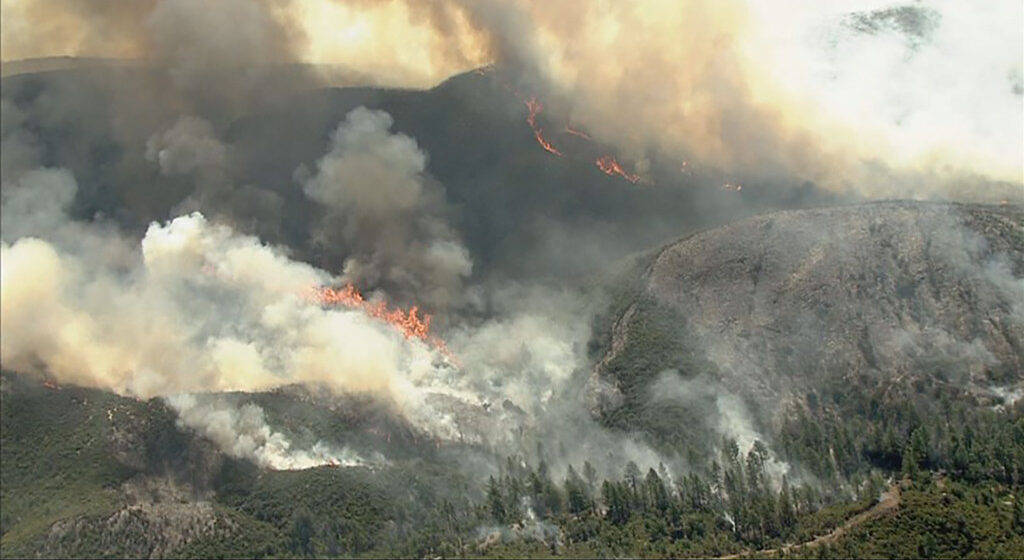This article was originally published in The Hill.
With President Biden’s signing Tuesday of the Inflation Reduction Act, attention will quickly turn to an energy permitting reform bill requested by Sen. Joe Manchin (D-W.Va.) as a condition for his support of the climate, health care and tax bill’s passage.
Rather than treating permitting reform as a “hold your nose” trade-off to attain sweeping spending intended to address climate change, environmentalists and climate advocates should embrace this opportunity to secure urgently needed permitting relief for conservation projects that help the environment.
Take the wildfire crisis, which poses enormous threats to wildlife habitat, air and water quality, and our climate. California’s wildfires released 112 million metric tons of carbon in a single year, the equivalent of adding 25.4 million cars to our roads. They also have decimated forest carbon offset projects, choked the air with smoke, scorched endangered species habitat and national parks, and killed 19 percent of all remaining giant sequoias.
Despite this impact, a clunky permitting process hamstrings our ability to mitigate these megafires and protect our forests. Enacting reasonable, bipartisan reforms is essential to tackling this crisis and should be part of any conservation-minded permitting reform bill.
There are things we can do today to mitigate these harms going forward. Proactive forest restoration, including ecologically responsible prescribed burns and mechanical thinning of brush and other excess fuels, can make fires less catastrophic when they occur.
These techniques have proven effective but are difficult to apply on federal land. Earlier this year, my organization released a study finding that it takes an average of five and seven years, respectively, from the time the Forest Service initiates a formal environmental review to when it begins implementing a mechanical treatment or prescribed burn project on the ground. When litigation is factored in, these timelines can balloon up to nearly a decade.
Fortunately, there are options to streamline this process without sacrificing environmental standards.
The Save Our Sequoias Act, introduced in June, is co-sponsored by 49 Republicans and 48 Democrats and supported by more than a dozen conservation organizations, including mine. Giant sequoias depend on low-intensity fire but can be wiped out by high-intensity fire. To address this problem, the bill directs the Forest Service to use streamlined procedures to remove excess fuels around sequoia groves and restore historical fire conditions. Failing to respond to this growing threat, says Rep. Scott Peters (D-Calif.), will lead to “a swift and straight path toward extinction for these iconic trees.”
The Root and Stem Act, co-sponsored by Sens. Dianne Feinstein (D-Calif.) and Steve Daines (R-Mont.), is another bipartisan fix that could speed up forest restoration significantly. The bill would allow sponsors of collaboratively developed forest restoration projects to bear the cost of environmental reviews, which would be performed by independent experts selected and supervised by the Forest Service. Contracting out this service could speed up the process substantially and free up agency resources and personnel to advance other projects.
Finally, Sens. Daines, Jon Tester (D-Mont.), James Risch (R-Idaho), and Mike Crapo (R-Idaho) have a bill to overturn the 9th Circuit Court of Appeals’ controversial Cottonwood decision, which the Obama administration warned the Supreme Court could “cripple the Forest Service.” Cottonwood imposes an unnecessary and duplicative procedure for forest restoration projects in several Western states that applies nowhere else in the country.
But the consequences are not limited to these states. Without prompt, effective management, Western forests emit smoke that degrades air quality for thousands of miles. That’s why, when the Cottonwood repeal bill was recently approved by the Senate Committee on Energy and Natural Resources, it drew the support of Sens. Manchin, Martin Heinrich (D-N.M.), Angus King (I-Maine), Catherine Cortez Masto (D-Nev.), Mark Kelly (D-Ariz.), and John Hickenlooper (D-Colo.) despite most of their states being outside the 9th Circuit’s jurisdiction.
Each of these proposals fits within Manchin’s proposed framework for permitting reform. And many of the framework’s other proposed reforms for energy development, including establishing maximum timelines for permitting reviews and addressing excessive litigation delays, would help speed up forest restoration efforts as well.
The climate bill will direct $1.8 billion toward forest restoration efforts. Each of these measures would improve the effectiveness of that spending, which is critical given the 80 million-acre backlog in needed forest restoration, an area larger than New Mexico.
A thoughtfully tailored permitting reform bill can provide a boost to the environment. Earlier this year, the Biden administration announced a 10-year strategy to tackle the wildfire crisis. To meet the strategy’s ambitious goals, we’ve got to make it easier for the Forest Service to respond to the urgent threat facing our timberlands. That’s why it is so essential that any permitting reform bill include reasonable, bipartisan measures to facilitate fixing America’s forests.




